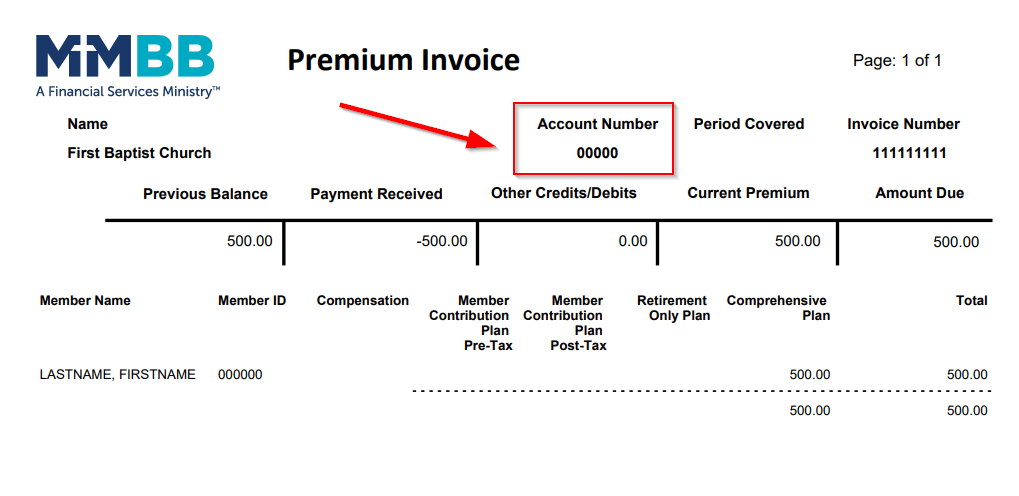Featured Article
While many retired clergy choose to enjoy their well-deserved season of rest, some seek ways to continue nurturing their spiritual calling.

April saw rising COVID cases in China prompt the shutdown of some of its biggest cities, causing global supply-chain issues. The ongoing war in Ukraine continues to exacerbate pressure on food and energy prices. While first-quarter earnings data was moderately favorable overall, several major companies reported disappointing results. And inflation continued to rise, leading to an almost certain 50-basis point interest rate increase from the Federal Reserve this week.
All of this led to April being a rather difficult month for Wall Street, capping the worst four-month start to a year in decades. The Dow and the S&P 500 endured the worst monthly returns since March 2020, but they weren't as bad as the Nasdaq, which suffered its biggest drop since October 2008, according to Dow Jones Market Data.
Ten-year Treasury yields climbed 56 basis points to settle at 2.88%. Crude oil prices advanced $3.13 to $104.07 per barrel. Prices at the pump fell in April as the national average retail price for regular gasoline was $4.107 per gallon on April 25, down from the March 28 price of $4.334 per gallon. Gold prices decreased after climbing well above $1,900.00 per ounce in March. The U.S. dollar hit a 20-year high before pulling back, but still posted the best month since January 2015.
| MARKET/INDEX | 2021 CLOSE | PRIOR MONTH | AS OF 04/29 | MONTHLY CHANGE | YTD CHANGE |
|---|---|---|---|---|---|
| DJIA | 36,338.30 | 34,678.35 | 32,977.21 | -4.91% | -9.25% |
| NASDAQ | 15,644.97 | 14,220.52 | 12,334.64 | -13.26% | -21.16% |
| S&P 500 | 4,766.18 | 4,530.41 | 4,131.93 | -8.80% | -13.31% |
| RUSSELL 2000 | 2,245.31 | 2,070.13 | 1,862.16 | -10.05% | -17.06% |
| GLOBAL DOW | 4,137.63 | 4,098.73 | 3,815.07 | -6.92% | -7.80% |
| FED. FUNDS | 0.00%-0.25% | 0.25%-0.50% | 0.25%-0.50% | 0 BPS | 25 BPS |
| 10-YEAR TREASURIES | 1.51% | 2.32% | 2.88% | 56 BPS | 137 BPS |
| US DOLLAR-DXY | 95.64 | 98.35 | 103.17 | 4.90% | 7.87% |
| CRUDE OIL-CL=F | $75.44 | $100.94 | $104.07 | 3.10% | 37.95% |
| GOLD-GC=F | $1,830.30 | $1,941.50 | $1,897.90 | -2.25% | -3.69% |
Chart reflects price changes, not total return. Because it does not include dividends or splits, it should not be used to benchmark performance of specific investments.
Eye on the Month Ahead
The Federal Open Market Committee meets in May for the first time since March. It is expected that the Committee will follow its most recent 25-basis point rate increase with a rate hike of at least 50 basis points. Many analysts expect the economy and stock market to be impacted by the ongoing Russia-Ukraine conflict and the restrictive monetary policy adopted by the Federal Reserve as it attempts to slow rising inflation.Data sources: Economic: Based on data from U.S. Bureau of Labor Statistics (unemployment, inflation); U.S. Department of Commerce (GDP, corporate profits, retail sales, housing); S&P/Case-Shiller 20-City Composite Index (home prices); Institute for Supply Management (manufacturing/services). Performance: Based on data reported in WSJ Market Data Center (indexes); U.S. Treasury (Treasury yields); U.S. Energy Information Administration/Bloomberg.com Market Data (oil spot price, WTI, Cushing, OK); http://www.goldprice.org (spot gold/silver); Oanda/FX Street (currency exchange rates). News items are based on reports from multiple commonly available international news sources (i.e. wire services) and are independently verified when necessary with secondary sources such as government agencies, corporate press releases, or trade organizations. All information is based on sources deemed reliable, but no warranty or guarantee is made as to its accuracy or completeness. Neither the information nor any opinion expressed herein constitutes a solicitation for the purchase or sale of any securities, and should not be relied on as financial advice. Past performance is no guarantee of future results. All investing involves risk, including the potential loss of principal, and there can be no guarantee that any investing strategy will be successful.
The Dow Jones Industrial Average (DJIA) is a price-weighted index composed of 30 widely traded blue-chip U.S. common stocks. The S&P 500 is a market-cap weighted index composed of the common stocks of 500 largest, publicly traded companies in leading industries of the U.S. economy. The NASDAQ Composite Index is a market-value weighted index of all common stocks listed on the NASDAQ stock exchange. The Russell 2000 is a market-cap weighted index composed of 2,000 U.S. small-cap common stocks. The Global Dow is an equally weighted index of 150 widely traded blue-chip common stocks worldwide. The U.S. Dollar Index is a geometrically weighted index of the value of the U.S. dollar relative to six foreign currencies. Market indices listed are unmanaged and are not available for direct investment.
IMPORTANT DISCLOSURES
Broadridge Investor Communication Solutions, Inc. does not provide investment, tax, legal, or retirement advice or recommendations. The information presented here is not specific to any individual’s personal circumstances.
To the extent that this material concerns tax matters, it is not intended or written to be used, and cannot be used, by a taxpayer for the purpose of avoiding penalties that may be imposed by law. Each taxpayer should seek independent advice from a tax professional based on his or her individual circumstances.
These materials are provided for general information and educational purposes based upon publicly available information from sources believed to be reliable — we cannot assure the accuracy or completeness of these materials. The information in these materials may change at any time and without notice.
MMBB is not registered as an investment adviser with either the United States Securities and Exchange Commission or any state securities regulator. MMBB does not receive compensation with respect to non-MMBB plan assets from any party for any advice given, referral made or transaction ultimately undertaken on account thereof. Neither MMBB, any affiliate thereof, nor MMBB's [plans] are subject to registration, regulation, or reporting under the Securities Act of 1933, the Securities Exchange Act of 1934, the Investment Company Act of 1940, the Investment Advisers Act of 1940 or state securities laws, and, therefore, plan participants and their beneficiaries and other persons receiving investment advice from MMBB will not be afforded the protections thereof. All persons should consider carefully the risks attendant to any investment as the value of such investments, and the income, if any, derived therefrom, may increase or decrease and may result in a loss of principal invested. The past performance of any investment or financial product is not a guarantee of future performance. You should consult with your own accountant or tax adviser as to the tax ramifications of entering into, holding or exiting any investment. MMBB is not offering or soliciting any transaction in any security nor is any information or advice intended for distribution to any person in any jurisdiction where doing so would result in contravention of any applicable laws, rules or regulations.
Thank you for joining the MMBB mailing list. You will begin to receive information soon.
Translations of any materials into languages other than English are intended solely as a convenience to the non-English-reading public. We have attempted to provide an accurate translation of the original material in English, but due to the nuances in translating to a foreign language, slight differences may exist.
Las traducciones de cualquier material a idiomas que no sean el inglés son para la conveniencia de aquellos que no leen inglés. Hemos intentado proporcionar una traducción precisa del material original en inglés, pero debido a las diferencias de la traducción a un idioma extranjero, pueden existir ligeras diferencias.

MMBB Financial Services is pleased to unveil our new website experience.
Watch a guided tutorial of our enhanced site to introduce you to important new features designed to help you live your life with financial confidence.
You will be linking to another website not owned or operated by MMBB. MMBB is not responsible for the availability or content of this website and does not represent either the linked website or you, should you enter into a transaction. The inclusion of any hyperlink does not imply any endorsement, investigation, verification or monitoring by MMBB of any information in any hyperlinked site. We encourage you to review their privacy and security policies which may differ from MMBB.
If you “Proceed”, the link will open in a new window.


 Back to Top
Back to Top